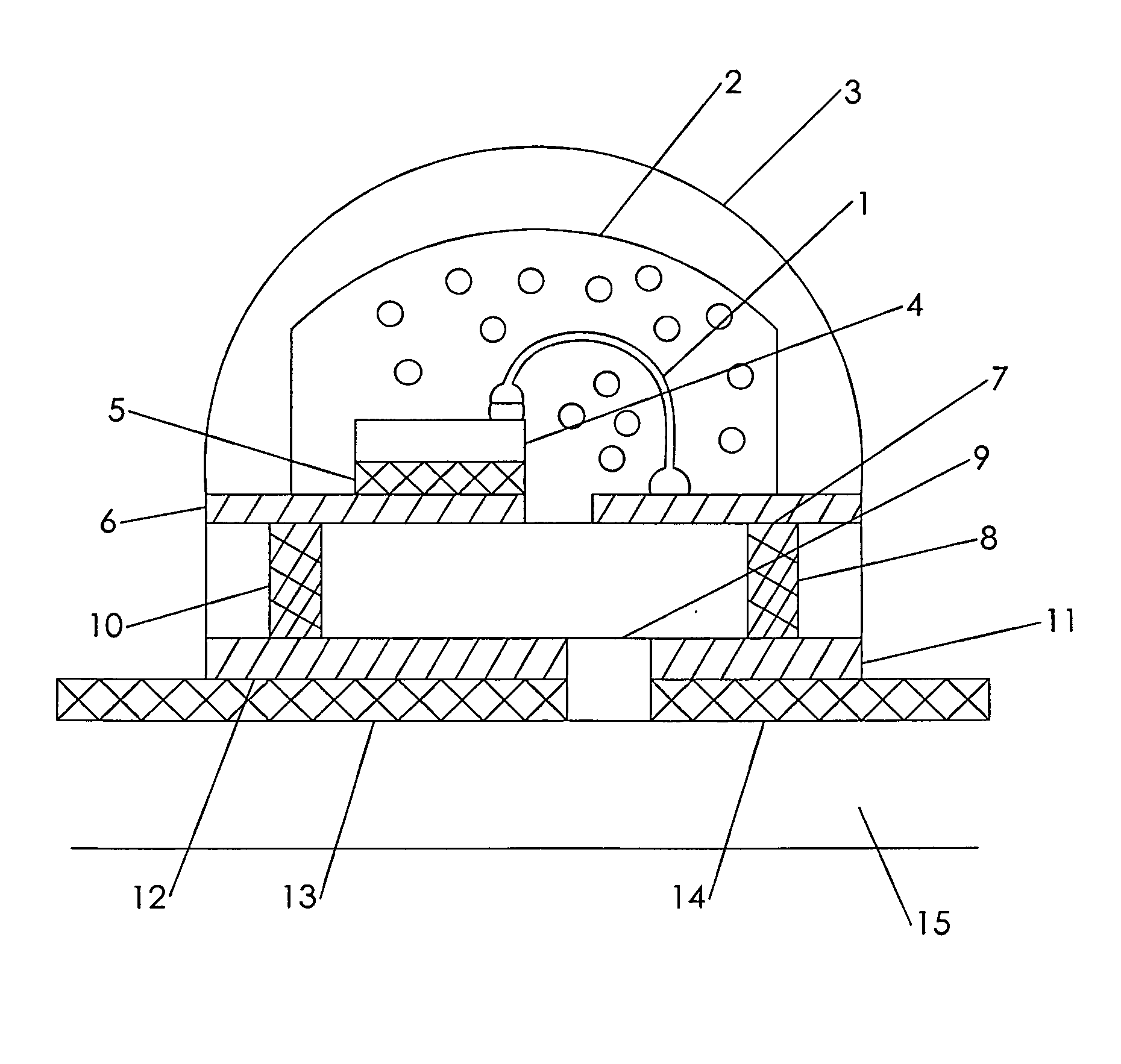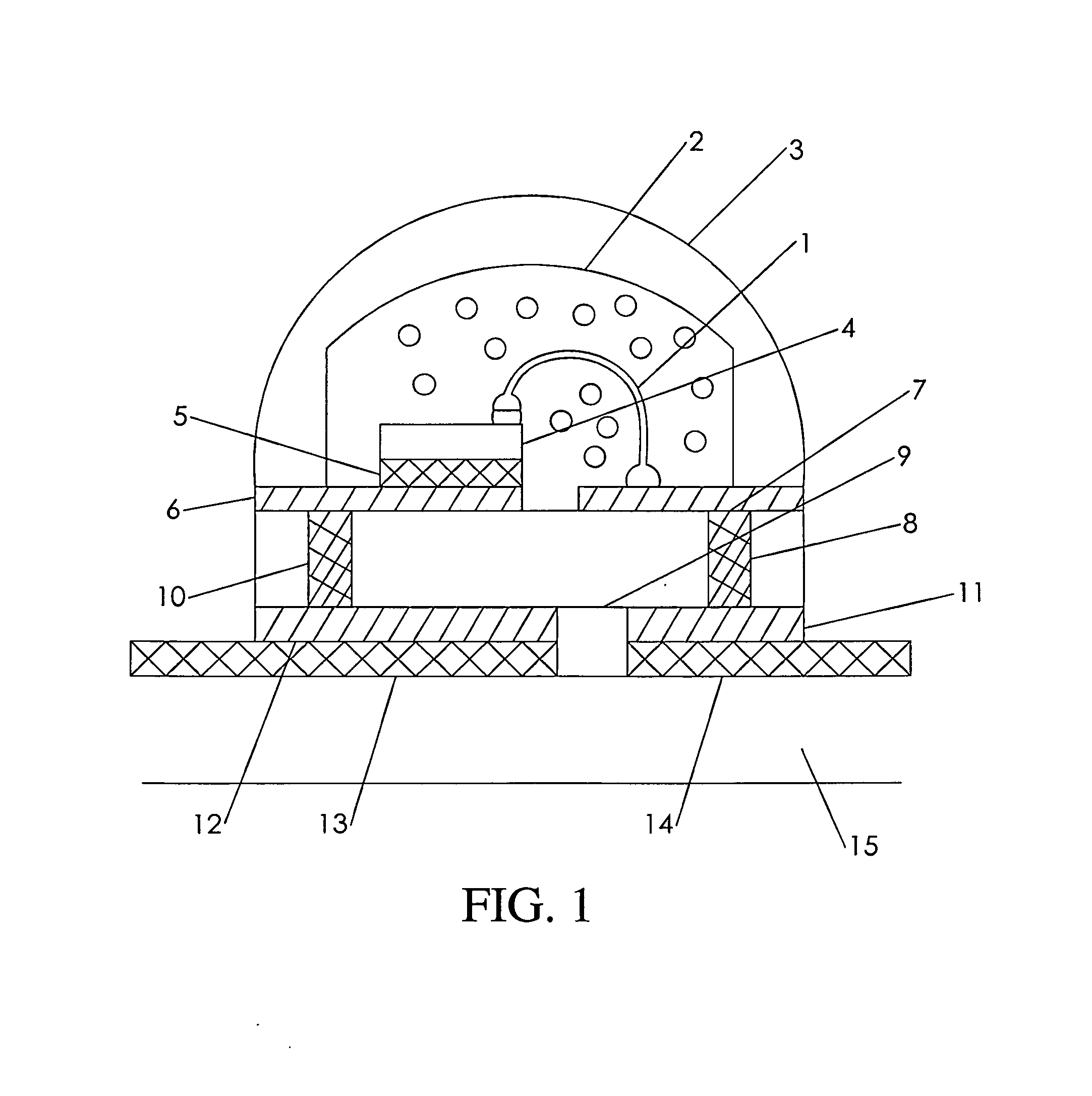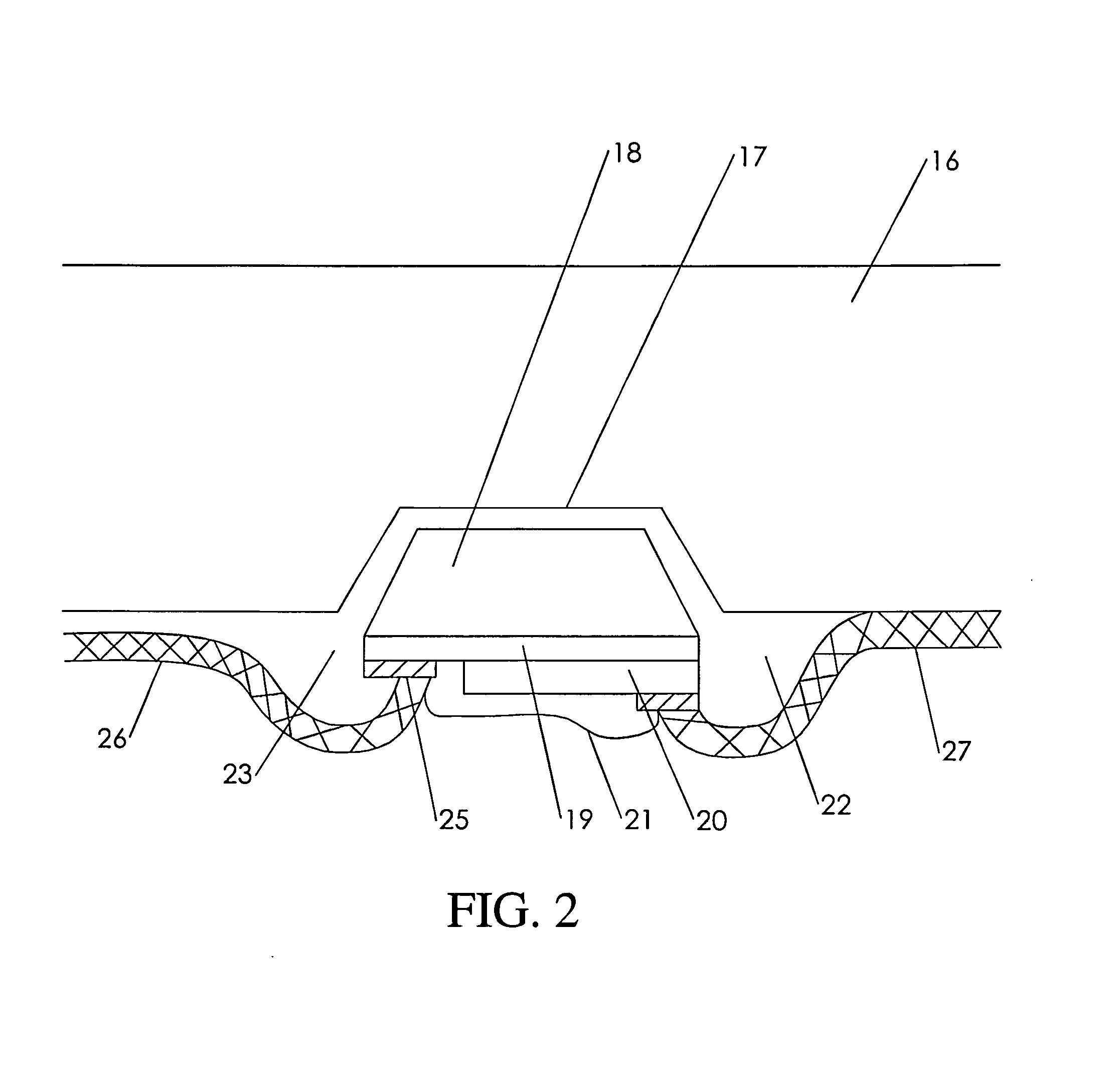Articles and methods for rapid manufacturing of solid state light sources
a technology of solid-state light sources and manufacturing methods, applied in semiconductor/solid-state device manufacturing, semiconductor devices, electrical devices, etc., can solve the problems of low thermal conductivity, low cost, and fundamental limitation of all organic based materials, so as to reduce overall cost and reduce manufacturing costs
- Summary
- Abstract
- Description
- Claims
- Application Information
AI Technical Summary
Benefits of technology
Problems solved by technology
Method used
Image
Examples
Embodiment Construction
[0024]FIG. 1 illustrates a standard prior art light emitting diode (LED) package. A package is defined as containing at least one LED and at least one layer of electrical and thermal interconnect means. As an example, a blue or UV LED 4 is connected by one or more wirebonds 1 to package contact 7. In a vertical LED, the second contact is on the backside of the LED 4 with a eutectic solder layer 5 which attaches to a second package contact 6. Typically a dielectric layer 9 has internal holes (vias) 8 and 10 to the external package contacts 12 and 11. A wavelength conversion layer 2 is typically an epoxy or silicone matrix with phosphor powders dispersed within the organic matrix. This wavelength conversion layer is then bonded to a lens 3 which increases the optical extraction from the system and changes the far field optical distribution by increasing the solid angle of light which can be extracted from the LED 4 and the wavelength conversion layer 2. The external package contacts 1...
PUM
 Login to View More
Login to View More Abstract
Description
Claims
Application Information
 Login to View More
Login to View More - R&D
- Intellectual Property
- Life Sciences
- Materials
- Tech Scout
- Unparalleled Data Quality
- Higher Quality Content
- 60% Fewer Hallucinations
Browse by: Latest US Patents, China's latest patents, Technical Efficacy Thesaurus, Application Domain, Technology Topic, Popular Technical Reports.
© 2025 PatSnap. All rights reserved.Legal|Privacy policy|Modern Slavery Act Transparency Statement|Sitemap|About US| Contact US: help@patsnap.com



